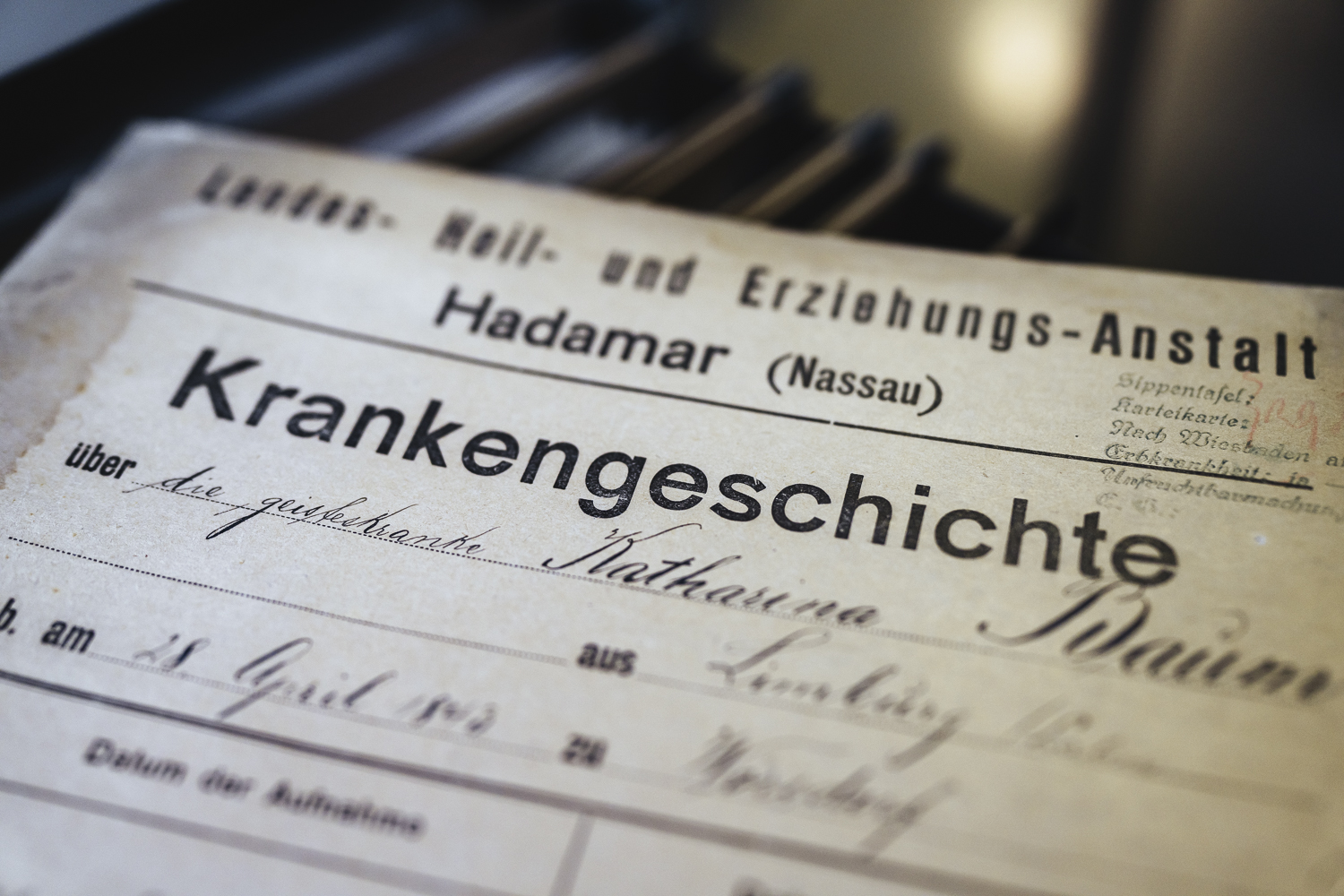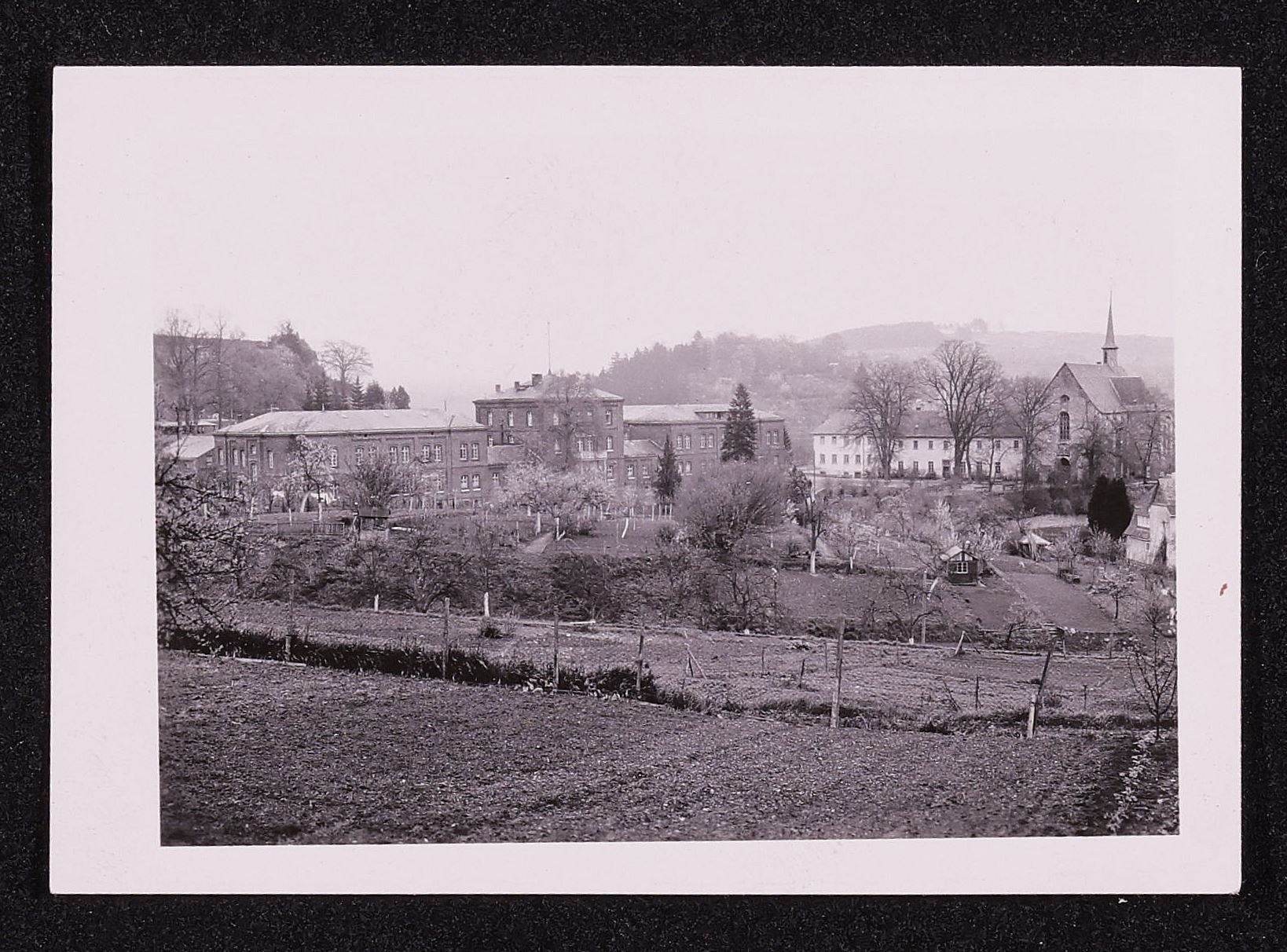In November 1906, the “State Care Home for the Mentally Ill” (Landes-Pflegeanstalt für Geisteskranke) was opened in the buildings of the former Correctional Institution of Hadamar (Corrigendenanstalt zu Hadamar) . The objective was that the facility should predominantly admit the mentally ill. At the turn of the 20th century, the need for psychiatric care had increased. Thus, Hadamar had become the third institution of its kind in the district of Wiesbaden.
Between healing and detaining
A total of 120 patients lived here in 1908. In 1913, the number rose to 193 people. During World War I between 1914 and 1918, the institution had to accommodate a military hospital with 50 beds for mentally ill soldiers. In addition to the increasingly crowded quarters, the dramatic care situation led to deplorable conditions. The lack of food brought forth malnutrition and disease among patients. Numerous deaths were the result. By 1919, only 37 men and 72 women were living in the institution.
The decline in the number of patients threatened the continued existence of the institution. That is why, two years after World War I ended, a home for “female psychopaths” was set up within the institution. Young women, who suffered from alcoholism, sexually transmitted diseases or also alleged hysteria, were placed here. Socially deviant behaviour was to be addressed within the framework of medical treatment as well as by means of correctional measures. In the course of these developments, the institution was renamed “State Sanatorium and Reformatory” (Landesheil- und Erziehungsanstalt).

In the period between World War I and the beginning of the Nazi regime, medical treatment of the mentally ill began to take a new direction. At first, treatment remained conventional and mostly consisted of prolonged baths and bed rest. The patients were also kept busy with house chores, sewing and kitchen work.
Toward the end of the 1920s, however, “work therapy” was also introduced in Hadamar which entailed that patients undertake meaningful work. One goal was to reintegrate people into a life outside of the institution.
It was for this purpose that the State Sanatorium, as it was called as of 1928, acquired the Schnepfenhausen Farm in 1927. Patients were to perform agricultural work there. Despite the reform efforts, it remained unclear what was to be done with people who were too ill to work.
At the same time, however, massive austerity measures were instituted owing to the economic crisis. As a result of economic hardship, the educational task in Hadamar was also curbed. On the eve of the Nazi accession to power, the focus increasingly became about “detaining” patients.
Literature: Gabriele Kremer, Die Landesheil- und Erziehungsanstalt Hadamar 1906–1932, in: Uta George et al. (ed.), Hadamar. Heilstätte – Tötungsanstalt – Therapiezentrum, Marburg 2006, p. 90–107.

